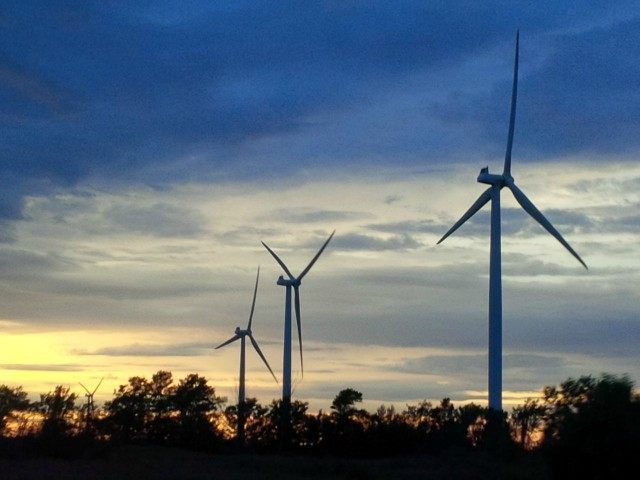Well, President Obama’s EPA has gone and done it.
For over a year, energy experts, utility regulators, electric grid operators, and everyone else who understands how the power sector works have criticized the EPA’s proposed “Clean Power Plan” (CPP), saying it will increase electricity prices and jeopardize the reliability of America’s electric grid. So, what did the President do? Did he listen to the experts? No. On August 3, he released a final rule that requires even steeper cuts in carbon emissions than previously expected.
Under the mandate of the Environmental Protection Agency (EPA), states are now required to reduce carbon dioxide (CO2) emissions from the electricity sector by 32 percent (from 2005 levels) by 2030. Specifically, each state must submit a compliance plan by 2018, with interim targets set for 2022, and final targets in place by 2030. And surprisingly, his plan could draw criticism from both sides of the climate debate.
For example, if you’re an ardent climate alarmist, and you think that man-made CO2 emissions will swiftly lead to global catastrophe, then you’ll find the CPP’s potential lowering of global CO2 concentrations by less than 1 percent (and a theoretical temperature reduction of 0.01 degrees Celsius by the year 2100) to be a rather meaningless accomplishment.
And if you’re skeptical of the threat posed by man-made CO2 in an ever-changing climate, then you’ll likely balk at the stunning price tag for this new set of rules, which the U.S. Chamber of Commerce estimates at an annual cost of $51 billion in lost GDP and 224,000 jobs lost.
So what exactly is President Obama buying with our money?
Essentially, the President has embarked on a course of replacing reliable, affordable energy with a haphazard experiment in “renewable” energy and the mass transformation of America’s power system.
So how does this play out in the real world?
For starters, the reduction goals simply are not achievable without closing roughly one-third of America’s coal-fired power plants—even though these are the same workhorse power plants that have carried the nation through peak demand during two straight brutal winters. The costs of replacing this needed power will be borne by consumers in the form of significantly higher electricity prices.
Regarding the idealistic vision of embracing “renewable energy,” wind and solar power have proven to be intermittent forms of low-yield power.
Today, renewables supply less than 5 percent of electricity generation nationwide. The CPP would impose a nationwide mandate to generate 28 percent of electrical power from solar panels and wind turbines, with about two-thirds of that coming from wind, by 2030.
Accomplishing this would require roughly 500 gigawatts of wind-powered generating capacity. Noting that a large wind turbine produces roughly four megawatts of power, this would mean the construction of not only 125,000 giant new windmills but also hundreds of gigawatts through additional, conventional plants to serve as backup reserves (for windless and cloudy days).
On top of that, thousands of miles of new high-voltage transmission lines would have to be constructed to carry this new power to where it is needed. Billions and billions of dollars would be needed to pay for all of this new infrastructure. Who pays? You guessed it—you and me, in the form of higher electricity bills.
Truthfully, the president’s plan is intended more for show than for actual environmental benefit. Even though China is building one new coal-fired power plant every 10 days, and India and other countries in Asia continue their own plans to vastly increase coal-fired electricity generation, President Obama believes he must impress upon Beijing and the world that America is leading by example— and do so ahead of the Paris climate conference in December.
But replacing reliable, affordable energy with more costly, less reliable sources poses serious consequences for Main Street. America depends on coal for roughly 40 percent of its power generation, and low-cost coal electricity is the principal source of power in 30 states. The industrial Midwest is particularly reliant on coal, and the greatly increased energy costs posed by the CPP will undoubtedly hurt manufacturers already struggling to compete against subsidized overseas producers.
A study of the new EPA plan suggests that, once the new rules are in place, a family of four could see their home energy bills increase by hundreds of dollars each year. In fact, the economic toll posed by the plan could be even more devastating, according to a report commissioned by the National Black Chamber of Commerce (NBCC). The EPA rules would reduce GDP by over $2.3 trillion over the next two decades and require the average family to pay $1,225 more for power and gas in 2030. And, by 2035, the NBCC says “cumulative job losses for Blacks will total about 7 million and for Hispanics will total 12 million.”
The overall consequences of this tenuous plan are startling. But is Washington paying attention?
The implementation of such heavy-handed carbon dioxide regulations will radically alter the entire U.S. electricity sector, jeopardizing the reliability of the electric grid and raising costs on hard-working families, all in the name of reducing global temperatures by a minuscule fraction of a degree. This is not science. This is not prudent economics. Americans need to stand up to such a dangerous plan and demand the continuation of reliable, affordable energy.
Terry Jarrett is a former commissioner of the Missouri Public Service Commission and an attorney with Healy Law Offices, LLC, in Jefferson City, Mo.

COMMENTS
Please let us know if you're having issues with commenting.